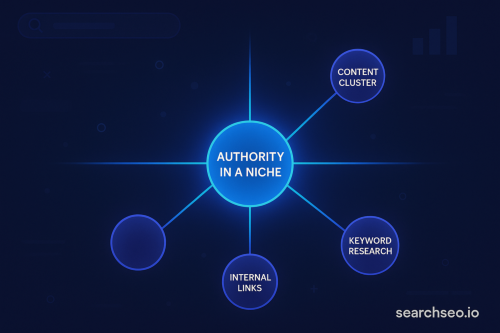Click-through rate (CTR) is one of those SEO levers that doesn’t always get the credit it deserves. Most people obsess over backlinks, content length, or technical tweaks. But here’s the truth: if nobody clicks on your page in the search results, the rest of your SEO work doesn’t matter.
That’s where CTR optimization comes in. By making your search listings more compelling you can turn impressions into clicks, clicks into engagement, and engagement into higher search engine rankings.

In this guide, we’ll break down CTR optimization strategies that actually move the needle. You’ll learn how to increase click-through rate with proven techniques, avoid common pitfalls, and discover the CTR optimization tools that make the process faster and easier.
CTR and why it matters in SEO
CTR measures the percentage of people who click your link after seeing it in the search results. For example, if 1,000 people see your page in Google and 50 click through, your CTR is 5%.
But why does this matter?
- CTR is a user signal. Search engines like Google and Bing look at CTR as a way to measure whether your result is attractive and relevant.
- Higher CTR = potential ranking boost. While CTR isn’t the only ranking factor, it feeds into Google’s machine-learning models as a proxy for search satisfaction.
- It highlights intent alignment. Pages with strong CTRs usually do a better job matching what the searcher wanted.
Think of it this way: you might rank #5 today. But if your listing gets more clicks than the #3 result, Google might test your page higher.
Pro tip: Use “CTR keywords”—terms proven to attract clicks, like “best,” “cheap,” “top-rated,” “in 2025,” etc.—to give your titles and descriptions an edge.
How to improve CTR SEO: 9 proven strategies
1. Write irresistible title tags
Your title tag is your first impression. Make it count.
- Front-load your primary keyword.
- Use brackets, numbers, or parentheses to stand out.
- Test emotional vs. factual approaches: “10 Proven CTR Optimization Strategies” vs. “CTR Optimization: Data-Backed Tactics That Work.”
2. Optimize meta descriptions like ad copy
Meta descriptions don’t directly impact rankings but they can make or break CTR.
- Use curiosity + benefits (“Learn how to improve CTR SEO and turn impressions into SEO traffic.”).
- Match the searcher’s intent so the description feels tailored.
3. Use structured data for rich snippets
Schema markup lets you “enhance” your listing with extra info. Examples:
- FAQ schema adds dropdown answers.
- Review schema shows star ratings.
- How-to schema creates step-by-step visibility.
Tools like Google’s Rich Results Test help verify setup.
4. Improve your URLs
Ugly URLs turn people away. Instead:
- Keep them short, clean, and keyword-rich.
- Avoid unnecessary parameters.
Example:
❌yoursite.com/page?id=12345
✅yoursite.com/ctr-optimization
5. Target high-CTR keywords
Some keywords naturally get more clicks. These are often high-intent and curiosity-driven. Examples:
- “Best SEO CTR optimization tools”
- “Top CTR optimization strategies 2025”
- “How to increase click through rate fast”
Use Google Search Console or third party tools such as Ahrefs to identify which queries already show impressions but get below-average CTR.
6. Match your content to search intent
Nothing tanks CTR like misleading results.
- Informational: “what is ctr optimization” → blog post.
- Transactional: “buy CTR optimization tool” → product page.
- Navigational: “SearchSEO login” → homepage.
Always ask: “Does my title and meta match what the searcher really wants?”
7. Use compelling featured images and OG tags
Visuals matter, especially on social shares and SERP previews.
- Use a branded featured image on your blog posts.
- Set OG (Open Graph) tags for Facebook, Twitter, LinkedIn.
- A crisp, relevant thumbnail can improve clicks dramatically.
8. A/B test titles and intros with tools
Small tweaks = big results.
- Tools like Google Optimize, or SplitSignal let you experiment with variations.
- Try changing one element at a time: numbers, adjectives, or order.
9. Monitor and improve via Google Search Console
Search Console is your best free CTR optimization tool.
- Go to Performance > Search Results.
- Filter by pages with high impressions but low CTR.
- Update titles and metas, then track uplift over time.
Improving CTR without compromising SEO
Quick warning: don’t chase clicks at the expense of trust. Misleading titles may boost clicks short term, but if bounce rates spike, rankings will suffer.
Instead:
- Align your promises (title/meta) with your actual content.
- Use the curiosity gap wisely—enough intrigue to get clicks, but deliver on the content.
- Avoid cheap clickbait like “You Won’t Believe This CTR Hack.”
CTR optimization tools to know
Not all tools are created equal. Here are some worth using:
- SearchSEO → Boost CTR directly with real traffic and clicks. Test different keyword strategies and traffic patterns safely.
- Google Search Console → Analyze impressions, CTR, and positions for each page.
- Ahrefs / SEMrush → Identify keywords and track ranking performance.
- SERPsim → Preview how your title and description will look in the SERPs.
Best practice: combine SearchSEO for active CTR boosting with GSC for monitoring.
Key metrics to watch beyond CTR
CTR is powerful, but it’s only part of the picture. Watch these too:
- Bounce rate: Are visitors sticking around?
- Dwell time: How long do they engage before leaving?
- Conversion rate: Are clicks turning into customers?
- Time on page & scroll depth: Do they actually consume your content?
This ensures you’re not just chasing clicks, you’re driving meaningful traffic.
Final thoughts: why CTR optimization should be part of your SEO stack
CTR optimization is one of the fastest ways to improve visibility without creating tons of new content or chasing endless backlinks. By making your results more clickable—and testing what resonates—you can climb the rankings faster and more reliably.
But remember: CTR isn’t magic. It works best when paired with a holistic SEO strategy (content + backlinks + CTR boosting).
Want to go beyond optimization into controlled, real-user traffic strategies? Explore our CTR Manipulation Guide for advanced tactics.


.svg)

.svg)
%201.png)








.svg)